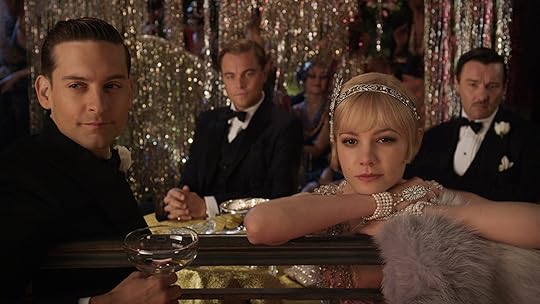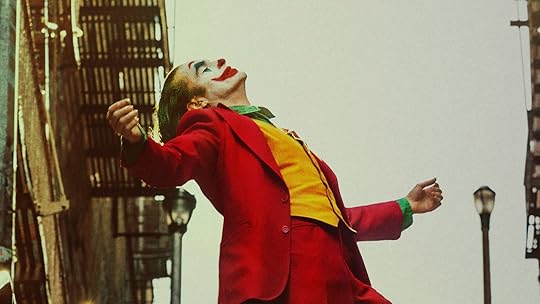How to Craft a Memorable Theme.
Have you ever watched a movie or read a book and felt like it spoke to your soul? That’s not just movie magic or literary wizardry; it’s the theme doing its job.
Theme is the message, the beating heart of your story, the truth you want to share with the world—or at least the truth your characters are grappling with. But don’t worry, crafting a strong theme doesn’t require a degree in philosophy.
Let’s break down the 7 key elements that make your theme unforgettable.
7 Key Elements That Make Your Theme Unforgettable. #1 – Start with a Big, Juicy Question.
#1 – Start with a Big, Juicy Question.
Every great theme starts with a question that keeps people up at night.
Think: What does it mean to be human? Can money really buy happiness? Is love worth the risk of heartbreak? Your story will explore this question in all its messy, complicated glory. It’s like a compass guiding your plot and characters.
Take Blade Runner 2049. The film asks: What does it mean to be human? K, a replicant, wrestles with questions about identity and worth, especially when he starts to think he might be something… more.
This central question keeps viewers hooked, challenging them to think about consciousness, personhood, and what makes life meaningful—all wrapped up in a gorgeously dystopian sci-fi package.
 #2 – Make Your Characters Live and Breathe the Theme.
#2 – Make Your Characters Live and Breathe the Theme.
Your theme isn’t just a message tacked onto the story. It should flow through your characters’ veins.
Your protagonist’s journey—how they change, what they learn—should reflect your theme.
They might start out believing one thing and, through some trials and tribulations, realize they were way off. Or maybe the world forces them to evolve, and they fight it kicking and screaming.
In The Queen’s Gambit, Beth Harmon isn’t just a chess prodigy. She’s a young woman dealing with trauma, addiction, and the pressures of her own brilliance.
The theme of battling personal demons and the price of genius unfolds as she conquers the male-dominated chess world—and herself. Beth’s arc is a beautiful, broken, triumphant mess, and we love it.

#3 – Use Symbols and Motifs Like a Boss.
Have you ever noticed how some stories use objects or images that pop up repeatedly, making you feel something deeper?
Those are symbols and motifs, and they’re like your theme’s secret agents, quietly driving the message home.
The Great Gatsby (2013 movie adaptation) brings the green light at the end of Daisy’s dock into vivid focus.
That green light represents Gatsby’s unreachable dreams and the hollow promise of the American Dream. It’s always there, glowing in the distance, teasing Gatsby and reminding us that wealth and success might not be the golden tickets they seem. Every time we see it, we feel the ache of Gatsby’s impossible longing.
 #4 – Crank Up the Conflict.
#4 – Crank Up the Conflict.
Conflict isn’t just fun; it’s essential for showing your theme in action.
Throw your characters into the fire, put their beliefs to the test, and watch how they change or fight for what they believe in.
The more intense the clash, the clearer your theme becomes.
In Black Panther, T’Challa’s conflict with Killmonger isn’t just an epic superhero showdown. It’s a battle of ideologies, exploring themes of legacy, responsibility, and the right way to use power.
T’Challa wants to preserve his father’s traditions, while Killmonger, with his radical vision, forces T’Challa to reconsider Wakanda’s place in the world. Their fight makes the theme pulse with urgency, leaving us thinking about what’s truly worth fighting for.

#5 – Show, Don’t Preach.
Nobody likes to be lectured. Themes should be felt, not just told. Let your characters’ actions, struggles, and moments of vulnerability show the theme.
If you spell everything out, you risk making your story feel like a PowerPoint presentation. Keep it subtle and trust your audience to get it.
Parasite never screams, “This movie is about class inequality!” Instead, it shows us through the Kim family’s cramped, semi-basement apartment and the Park family’s mansion, through the visual language of stairs and the flood that devastates the Kims while barely inconveniencing the Parks.
The theme emerges organically, and by the end, you’re thinking about economic divides without even realizing you’ve been given a masterclass in social commentary.

#6 – Let the Setting Do Some Heavy Lifting.
The setting isn’t just where stuff happens; it can reinforce your theme and make your story more immersive.
Think about how your world reflects your characters’ struggles or the messages you’re exploring.
A dystopian wasteland might highlight themes of survival and desolation, while a lush, vibrant city could explore ambition and excess.
In Mad Max: Fury Road, the desert setting is as brutal and unforgiving as the film’s theme: the fight for survival in a world stripped of humanity. Resources are scarce, and power is in the hands of warlords.
This harsh landscape makes every chase and every struggle feel more intense, underscoring the themes of environmental collapse and human desperation. By the end, we’re thirsty, exhausted, and fully immersed in the story’s message.
 #7 – Embrace Ambiguity and Let Your Theme Evolve.
#7 – Embrace Ambiguity and Let Your Theme Evolve.
Themes can be complicated, just like real life. Sometimes, your story’s theme might evolve as your characters make hard choices or learn difficult truths. And hey, ambiguity can be your friend.
Audiences don’t need all the answers wrapped up with a bow; sometimes, it’s more powerful to leave them thinking.
The Joker explores themes of mental illness and societal neglect. Arthur Fleck’s descent into madness isn’t simply about personal failure; it’s about a society that chews up and spits out the vulnerable.
The film doesn’t give easy answers or excuses for Arthur’s actions, making the theme even more unsettling. The ambiguity leaves us debating what society’s role is in the creation of people like Joker, making the theme linger long after the credits roll.
In Conclusion – So, there you have it—seven essential elements to help you craft a theme that will resonate, haunt, or inspire your audience. Remember, theme isn’t just an afterthought; it’s what gives your story depth, meaning, and the ability to connect with people on a whole other level.
Use these tools, watch your favorite movies, and read your favorite books to see how the pros do it. Then go write your own masterpiece with a theme that packs a punch.
Happy writing!
Now it’s YOUR turn – What’s a theme in a book or movie that stuck with you long after finishing it, and why?
Would love to get your input in the comment box below.
The post How to Craft a Memorable Theme. appeared first on Vered Neta.



